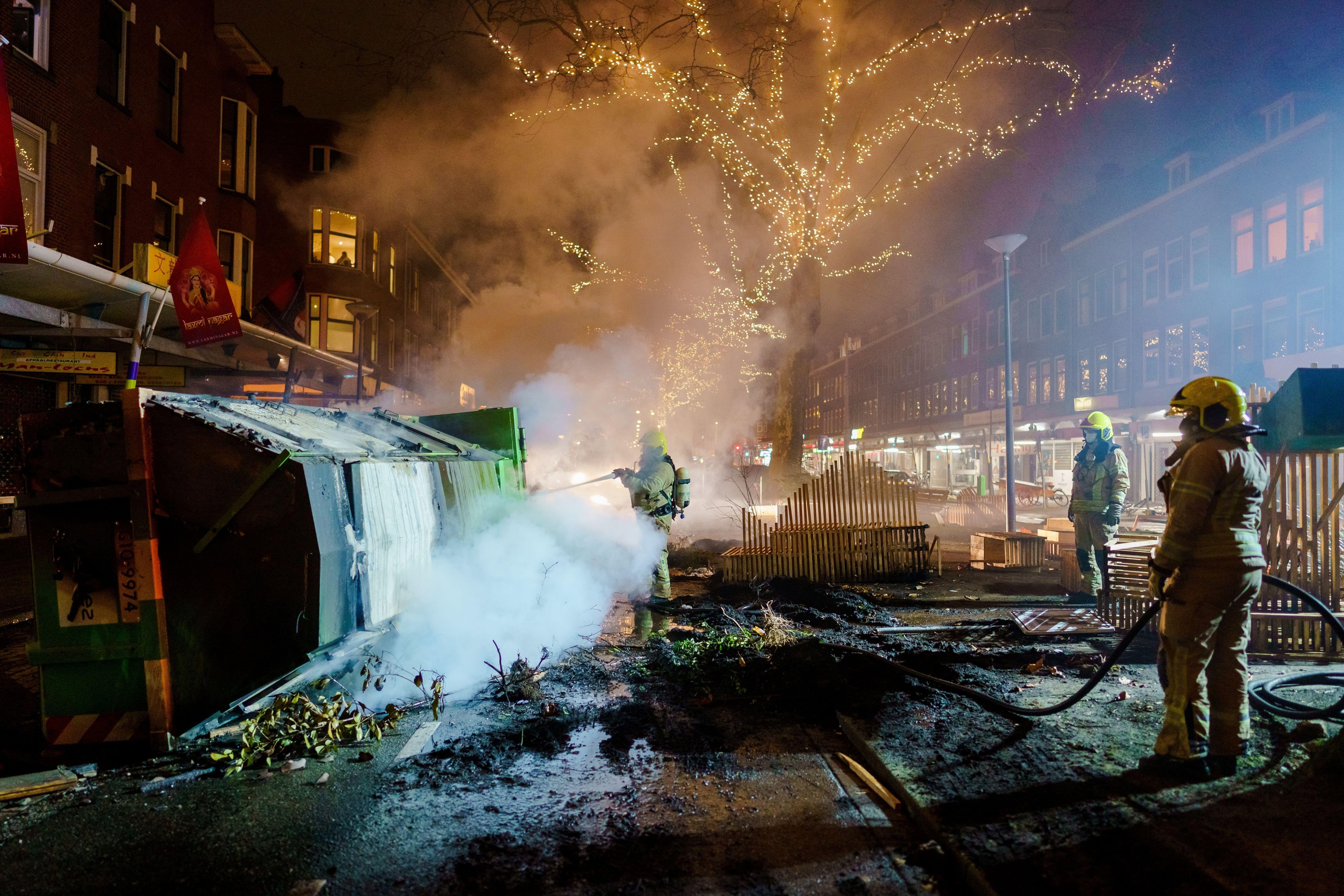Last week, as the more contagious coronavirus variant began to spread within the Netherlands, the government announced a strict lockdown, including a nighttime curfew between 9 p.m. and 4:30 a.m. The curfew, the first since World War II, came despite falling cases and contrasted with the country’s comparatively lax restrictions early in the pandemic. But since Saturday, the image of the Netherlands as a bucolic country of bridges and bikes has taken a turn, as the worst riots in 40 years have swept over 10 cities in response to the lockdowns. Rioters blew up a pedestrian bridge in Amsterdam, while others burned bikes, looted and vandalized property, and clashed with police. After three days of unrest, Tuesday night saw smaller crowds, more police, and less violence. Yet the country is still on high alert, as the national police chief warned that this reprieve doesn’t necessarily mean the riots have ended.
This weekend’s saga began in Urk, a small fishing village in the northern Netherlands. When the curfew took effect Saturday evening, some residents took to the streets in a protest that turned violent and culminated with the burning of a COVID-19 testing center. The next night, demonstrations and violence spread throughout the country, as supporters were galvanized through Telegram and WhatsApp. The Hague, Amsterdam, Rotterdam, and Eindhoven all featured similar scenes—shops looted, rocks thrown at the police, cars torched. Hundreds have been arrested in connection with the violence.
“Sometimes we have riots around soccer matches,” says Hans Nijenhuis, the editor in chief of Algemeen Dagblad, a Rotterdam-based daily with a large circulation. “But what we see now with the plundering and the hitting of shops, that’s very, very new.”
Nijenhuis says that protests against COVID-19 restrictions are not new to the Netherlands. Small groups in Urk, which Nijenhuis notes has a substantial anti-government population, and Amsterdam have been protesting restrictions since the beginning of the pandemic. But it’s the scale and violence of these demonstrations that have shocked the nation. Nijenhuis says that the protests this weekend were “hijacked” by young people who were restless and tired of the restrictions. The recent tightening of measures came at a time when people had just reached their breaking point.
The New York Times compared the protests in the Netherlands to the Jan. 6 U.S. Capitol insurrection, but Nijenhuis is quick to counter this claim. “Here in Holland, there is no support [for the rioters] from anybody. No group, no political party is part of this,” he says. He emphasizes that he does not see these riots as politically motivated, but rather just young “hooligans” exploiting these protests as a chance “to enjoy themselves.” The older Dutch population, who remember the curfews put in place during the Nazi occupation of the Netherlands, are the angriest about these riots—since, Nijenhuis says, they know from experience the only way to get through a tough time is to endure it. The riots thrive and grow through attention, so Nijenhuis warns against giving them too much. In the scheme of the country—which has over 17 million people—the thousand or so rioters should only be a tiny voice. Yet, they’re capturing global headlines and seem to echo anger with coronavirus restrictions and the establishment seen around the world.
The violence comes amid political shifts both in the Netherlands and elsewhere in Europe. On Jan. 15, Dutch Prime Minister Mark Rutte resigned over a scandal about his mishandling of child care benefits, though he will continue to govern through March. On Tuesday, Italian Prime Minister Giuseppe Conte announced his resignation after mounting pressure from the former Prime Minister Matteo Renzi over his response to COVID-19. And the EU and U.K. are falling deeper into battles over coronavirus vaccine distribution.
Italy currently has the sixth-highest COVID-19 death rate in the world, according to a ranking by Johns Hopkins. The U.S.’s death rate ranks 10th, while the Netherlands can be found way down the list, ranking 38th. The lockdown in the Netherlands is expected to last until at least Feb. 9. After a quiet Tuesday night, the future of the demonstrations—and the length of lockdown—seem to hang in suspense, but what’s clear is the quicker the country returns to peace, the quicker people will be able to return to some sense of normalcy.
